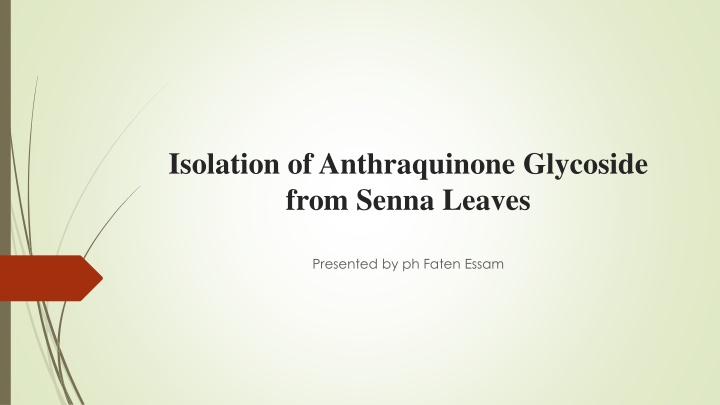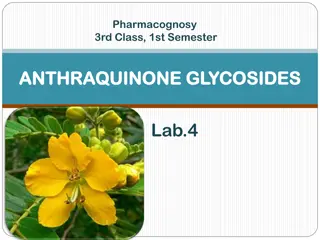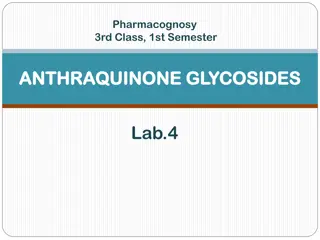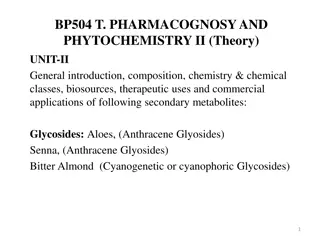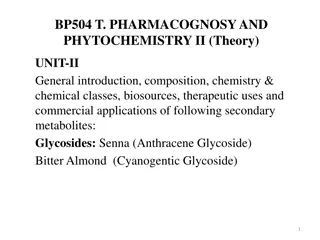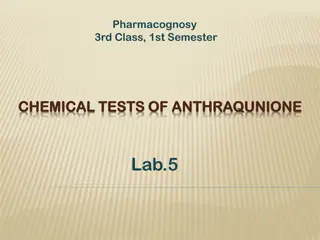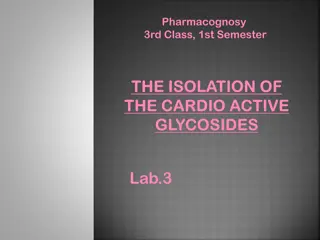Isolation of Anthraquinone Glycoside from Senna Leaves
Anthraquinone glycosides found in Senna leaves have stimulant cathartic effects, aiding in bowel evacuation and constipation relief. Sennosides A and B are key constituents responsible for this action. Learn more about the extraction process and medicinal uses of these compounds from the research presented by Ph. Faten Essam.
Download Presentation

Please find below an Image/Link to download the presentation.
The content on the website is provided AS IS for your information and personal use only. It may not be sold, licensed, or shared on other websites without obtaining consent from the author.If you encounter any issues during the download, it is possible that the publisher has removed the file from their server.
You are allowed to download the files provided on this website for personal or commercial use, subject to the condition that they are used lawfully. All files are the property of their respective owners.
The content on the website is provided AS IS for your information and personal use only. It may not be sold, licensed, or shared on other websites without obtaining consent from the author.
E N D
Presentation Transcript
Isolation of Anthraquinone Glycoside from Senna Leaves Presented by ph Faten Essam
Anthraquinone are glycoside which possess anthracene or its derivatives as aglycone part in which two ketone group are attached to benzene ring. General anthraquinone structure
Anthraquinone and related glycosides are organic compounds found in some plants and have a stimulant cathartics effect , exert their action by increasing the tone of the smooth muscle in the wall of the colon and stimulate the secretion of the water and electrolytes into the large intestine.
After the oral administration, the Anthraquinone glycosides are hydrolyzed in the colon by the action of enzymes of the micro flora, to the pharmacologically active free aglycone which usually produce their effect in 8-12 hour after administration, these agents are indicated for constipation in patient who do not respond to milder drugs and for bowel evacuation before investigation procedures or surgery.
Plant used in this lab common name : Senna Scientific name : Cassia senna
Anthraquinone glycoside content - Sennoside A and Sennoside B( rhein dianthrone) - Sennoside C and Sennoside D( one molecule of rhein and one molecule of aloe-emodin )
Medicinal Uses: - Cathartic - Treatment of irritable bowel syndrome - Treat skin disorder - Clean digestive from worms
##The phytoconstituents principally responsible for its characteristic action are two anthraquinone glycosides : Sennoside A and Sennoside which together are responsible for up to 40 60% activity of crude senna.
Side effects: Senna can cause some side effects including stomach discomfort, cramps, and diarrhea. Longer use can cause the bowels to stop functioning normally and might cause dependence on laxatives.
Procedure 0.5 gm of senna + 100 ml of water extracted by decoction method
